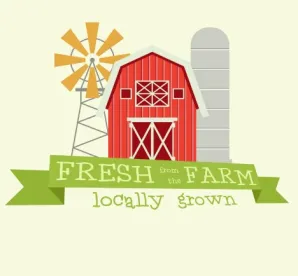Despite recent trends toward consolidation in the agricultural industry, farming generally remains a family affair. According to the United States Department of Agriculture, 97 percent of all farms in the United States are family owned.
However, our increasingly mobile society has interrupted the familiar narrative of family members working side-by-side on the farm. Frequently, certain family members choose to follow alternative career paths while other family members choose to remain engaged with the family business. Commodity volatility, a tighter lending environment, increased regulation, and an aging baby boomer population also present challenges to family farming operations in planning for the future. As a result, developing a comprehensive succession plan is critical in today's environment to protect the long-term viability of the family farm and, frequently, family unity. Here are some reasons why:
Every Business Needs a Leader—the Family Farm is No Exception.
After the traditional leader(s) of the family farm are gone, who will be in charge? This is a decision that should not be left to chance. All family members do not necessarily possess equal interests or capabilities. Placing an unprepared, unwilling, or unable family member in a leadership role, intentionally or by default, can doom any business.
Corporate and estate planning documents can provide for leadership succession to ensure the farm operation is managed by the most willing and able successor. Sometimes, there are no family members willing to (or capable of) taking on this role. In such cases, a leader from outside the family can be identified, while preserving ownership and income protection for family members not actively involved in the business. A candid assessment of these issues can head off family strife and business turmoil following a leader's death.
Continuity is Critical to Preserving Relationships for Continued Success.
Many family farms rely on key employees for their success. If those employees have doubts about the future, they may look for different, more stable employment opportunities. This loss in human capital can be costly and sometimes irreplaceable.
The same is true with regard to outside business relationships—suppliers, bankers, and customers want to know whom they are dealing with and that a change in ownership or management will not affect them in a negative way. By having a well-defined plan that is understood by all affected parties, important employee and professional relationships can be preserved even as transition occurs.
Ownership of the Land is Critical to Continued Operations.
Frequently, the land is the most valuable asset of a family farming operation. Owners of farm land should carefully consider how it will be owned in the future—whether jointly by individuals, by a corporate entity, or divided among the members of the next generation.
Many farm families have found themselves engaged in bitter intra-family lawsuits as a result of joint ownership of land that is used (or perceived to be used) unequally by the owners. These sorts of fights can be costly and cause the farm land to be broken up, jeopardizing continued operations and the overall value of the land. On the other hand, careful design of future land ownership can ensure continuity and provide an income stream to family members who are not participating actively in the farming operation.
The Government is Happy to be the Biggest Beneficiary of Your Estate, and It Wants Its Share on Time.
When discussing long term plans, most farmers indicate that they want to keep their farm in their family for as long as the family wants to operate it. Even if the family later decides to sell or continue operations in a different way, having the flexibility to control the timeline and terms of that sale or transition is important for purposes of maximizing value and meeting other family goals.
In some cases, however, these plans can be undermined by federal estate taxes due upon the farm's owner's death. The federal estate tax applies to the value of all assets over a certain threshold and is assessed at a 40% rate. Any tax due generally must be paid within nine months after the death of the owner. If there is not sufficient cash available to pay the tax, it may be necessary to dispose of property at a "fire sale" or take on debt to satisfy the obligation to the Internal Revenue Service. Fortunately, through advance planning, the estate tax burden often can be reduced significantly or altogether eliminated—leaving the farm owner's intended beneficiaries in position to make decisions about continued operations on their own terms and without the government as a cash-hungry partner.
It’s a Dangerous World Out There—Protect What You Can!
Family farms often carry large operating lines of credit with land or equipment pledged as collateral. Because of the very nature of farming, family farms also often find themselves victims of lawsuits alleging personal injuries, workplace injuries, or environmental violations. Are the assets of the family farm owned in the proper corporate structure to minimize individual liability for claims against the business? Is proper liability insurance in place? Evaluating these questions will help minimize the possible liability of the current generation as well as the burden on the members of the next generation when they assume ownership of the farm and business.
For farm families, the farm itself often is their greatest asset of value and always is a source of pride and identity. Without proper planning, however, the farm and its operations can be jeopardized when management or ownership changes. A comprehensive succession plan focused on leadership, ownership structure, and continuity will provide the best chance for success into the future. You can bet the farm on it.





 />i
/>i
